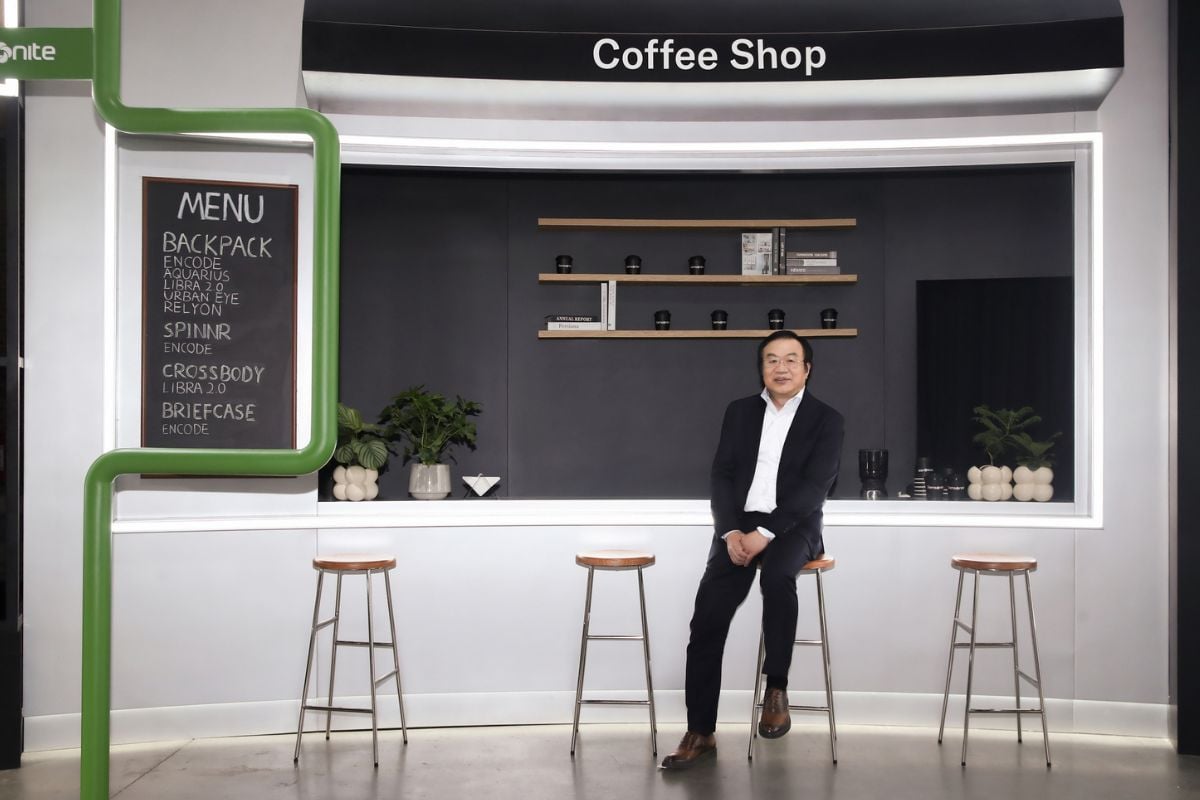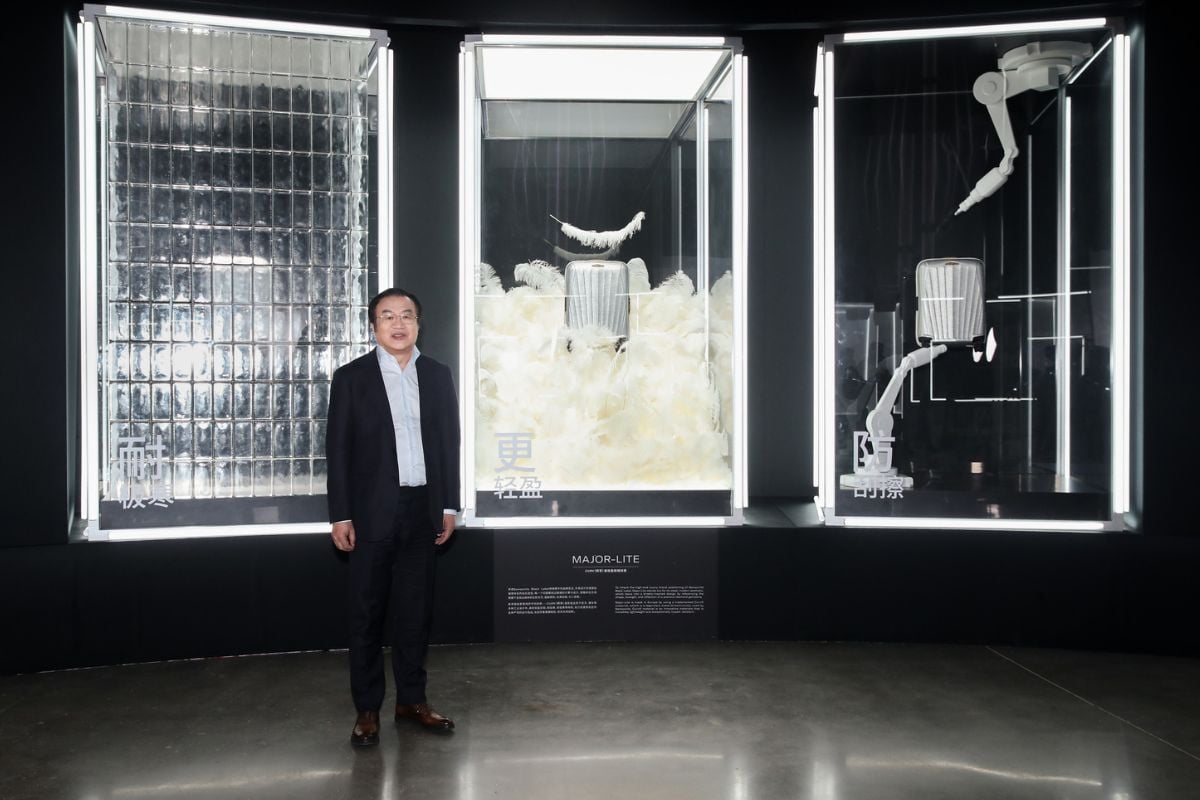With the travel business booming, luggage companies such as Samsonite are riding a wave. But in order to maintain success, Samsonite Group Greater China President Frank Ma says diversification – and passion – are key.

Travel is back. Slowed for a few uncertain years by the COVID-19 pandemic, domestic and international travel have returned with a vengeance. People are desperate to see the world again after extended time at home, and they are opening their wallets to satisfy that wanderlust.
Nowhere is this more evident than in China. Domestic tourism spending had, by 2023, surpassed pre-pandemic levels, indicating an increased desire not just for travel, but also related products and services. For businesses in the travel ecosystem, such as luggage icon Samsonite, this is very good news indeed.
“The travel industry is booming, and that’s provided us with a great opportunity to develop,” says Frank Ma, President of Samsonite Group Greater China.
“In the last few years, China has transformed from a high-growth economy to a new normal. It means we’ve had to adjust to make sure our business is sustainable.”
An Agile Approach
One of Samsonite China’s strengths is being able to adapt quickly. The last two decades have seen plenty of economic turbulence and two different pandemics. For the luggage company, it’s been a chance to better understand its clientele.

“We know our brand and we know the economy in which we operate, but we also have come to really understand our customers,” Ma says. “Retail has been very important for us as far as building an image in the market. We’re seen very much as a lifestyle brand, particularly by younger customers.”
Samsonite has also taken a risk by extending the brand beyond the travel category in which it’s best known.
“We started a journey of category extension,” Ma says. “Samsonite was used to being seen as a luggage brand only, but it’s a versatile space, so we’ve branched out into close-to-body products and even school bags.”
Entering the lifestyle market allows Samsonite to reach more consumers and suit more occasions beyond travel, he says.
“Travel itself is segmented in that way. Business travel is not leisure travel, for instance. It’s a very promising brand extension for us.”
“We know our brand and we know the economy in which we operate, but we also have come to really understand our customers.”
The Samsonite Group already has a stable of strong brands in its portfolio, including its performance luxury line Tumi, its family travel-focused American Tourister and, of course, Samsonite.
“We have a brand to suit different consumer needs,” Ma says. “But you have to be able to reach those customers. For younger people, that means getting on social platforms such as TikTok.”
In the background, Samsonite has been working on different ways to reach customers both online and offline. “That means ecommerce and digitalization, and I’d say we’re ahead of the crowd as far as that goes,” he says.
“They’re really the driving forces of brand building for Samsonite.”
There’s also been a greater focus on sustainability. “We shared out first comprehensive strategy in 2020. Built on our 110-year heritage of innovation, the strategy sets out our vision across our Product, Planet and People pillars,” he says.
“We have made significant progress over the past years. In 2023, approximately 34 percent of net sales came from products made at least in part from recycled materials, and we achieved 100 percent renewable electricity across our own operations, two years ahead of our 2025 target date.”
Rising to the Challenge
The state of the industry is very different today than when Ma joined Samsonite in 1998. His journey with the company began in the wake of the 1997 Asian financial crisis, so finding opportunity in a dark place comes naturally to him.
“For Samsonite, the future is our multitude of brands and diversification,” he says. “Our multi-brand structure helps us achieve comprehensive coverage in an era of travel as a lifestyle, which is unique for a travel company.”

The pandemic, he adds, provided an opportunity, particularly in China. “People are doing more shopping online,” he says. “Social ecommerce is still booming. We’ve found a new normal here. But young people love to travel, and we can provide the best functional and fashionable brands and products to meet their needs.”
“We always stay true to the consumer.”
The challenge in such a time is waiting to see how China’s consumers are affected economically in the long-term. “Affluent people may not be as impacted as the middle- or lower-income consumers, so clear brand positioning will be very important,” Ma says.
“We don’t see that traditional bricks-and-mortar retail will come back strong, so appealing to an online consumer audience matters, but in the meantime we have to make sure the brand is not diluted.”
While the travel industry has changed, Ma says Samsonite can be relied upon to meet whatever needs may arise.
“We always stay true to the consumer,” he says. “Passion and patience matter in times like these. That’s my philosophy.”


